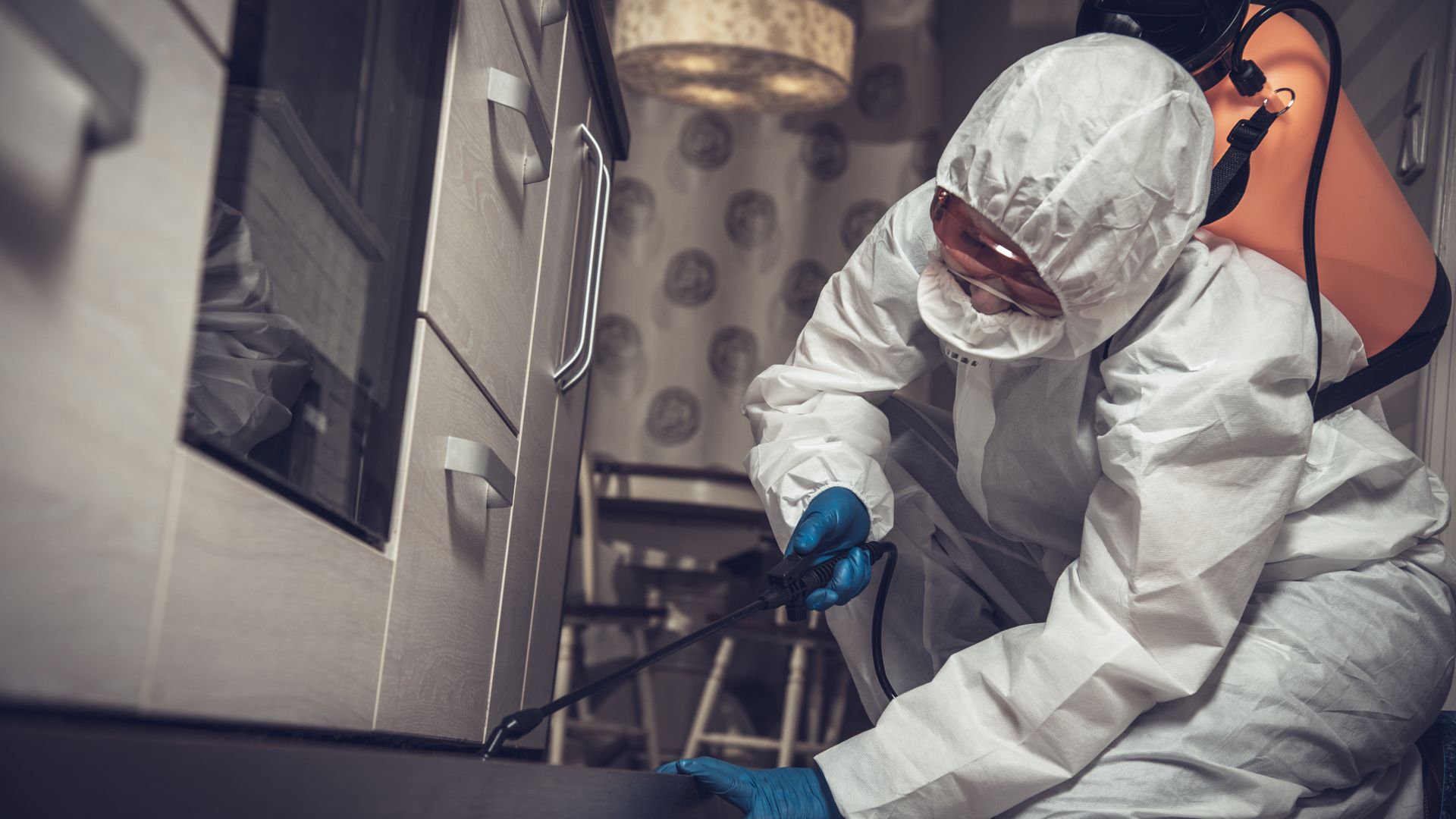
Say Goodbye To Bed Bugs: The Most Effective Control Solution For Your Roseville Home
How much do you know about bed bugs? Here are a few quick questions. See how many you have the answers to. Are bed bugs large enough to see with the naked eye? Do bed bugs live in your yard? Do bed bugs jump? Do bed bugs choose to live in dirty homes? Okay. Let's see how you did.
Bed bugs are tiny insects, but not so tiny that you can't see them. An adult bed bug is 1/5 of an inch. They are almost exclusively indoor insects and cannot live in your yard. They do not jump like fleas but crawl like cockroaches. As for living in dirty homes, bed bugs don't choose where they live. They are carried from one place to another by humans. When they get to a new home, they do what they did in the last. They search for food, hide from view, and grow a population.
How did you do on this short test? Are you a bed bug expert, or do you have a lot to learn? One reason bed bugs are such horrible houseguests is that Roseville residents don't really know much about these insects. A lack of knowledge can lead you down a long and frustrating road of failed DIY attempts. Today, we're going to get you up to speed. We'll look at all of the essential facts you need to get rid of a bed bug problem, starting with how to perform a bed bug inspection.
If you'd rather have someone perform an inspection for you and apply a treatment that will get the results you want, remember that your Neighborly Pest Management team is always available to assist you with pest problems in Roseville. Contact us at any time for advice or service options.
Visual Clues: Identifying Bed Bugs By Appearance
.2404180857550.jpg)
It can seem like bed bugs are invisible to the naked eye. The reason for this is that they are surprisingly adept at hiding from view. Bed bugs avoid the light if possible. You'll have to look in dark cracks, crevices, and voids to find them. They're also attracted to extremely tight spaces. You can examine an entire mattress and fail to find bed bugs because they hide in seams, underneath labels, in the gaps around vent grommets, or inside a tiny fabric hole. Worse, you may see a bed bug and not realize it. Let's start by looking at why this is the case. Then, we'll discuss other visual clues to look for in your home.
Do you know what a bed bug looks like? If you've seen a picture of a bed bug in a news report, you will likely know that bed bugs are reddish-brown and shaped like an apple seed. That is what adult bed bugs look like, but a nymph looks quite a bit different. When a bed bug first hatches, it is entirely pale. If you catch one of these newly hatched nymphs feeding, its abdomen will appear bright red because you'll see the blood inside. So, a baby bed bug can look like an insect with a pale head and thorax and red abdomen. Why is this important to know? It is because the young bed bugs are more likely to come out of hiding in the evening to bite you before you go to bed, and it is this stage of the bed bug development that you're most likely to see, not the adult stage.


Ensuring your home and business are pest-free, explore our different service areas to see if we're local to you! Give us a call to get started!
Professional Bed Bug Control: Call In The Experts Right Away
Can you deal with bed bugs on your own? Yes—if you catch them early. As you perform your inspection, keep a vacuum at hand. When you find bed bugs, suck them up quickly and dispose of the bag outside the house. If you can't locate where the bed bugs are hiding, or you know that bed bugs have spread, we strongly recommend contacting a licensed professional for bed bug removal.
A bed bug infestation is the kind of pest problem that can come back around to bite you again—quite literally. These insects can climb onto people who visit your house and hitchhike to their homes. If you don't eliminate them before this happens, they could return with your friends or extended family after you get rid of the bugs in your home.
Another major benefit to getting professional treatment as soon as possible is that you won't have to battle bed bugs for months. A licensed technician uses a multi-pronged strategy to systematically treat and track bed bugs until they eliminate them entirely.
Are you in Roseville? If so, contact Neighborly Pest Management to learn about our treatment methods or request a service visit. We use results-based treatment methods and a track record of success in dealing with these elusive pests.
-
Same-Day & Emergency Services AvailableWhen possible, we can provide prompt assistance to help with your pest solution needs.
-
Local, Family Owned & OperatedRooted in our local communities, we know the best solutions for the pests in our unique areas.
-
We Offer Organic Treatment OptionsEmbrace a eco-friendly approach with our range of sustainable solutions for your needs.
-
45+ Years of Industry ExperienceTrust in our seasoned knowledge and proven track record spanning over four decades.
Preventing Bed Bug Infestations: Tips And Techniques
Once the bed bugs are gone, what comes next? Bed bug prevention requires a focused effort. You have to watch for them and take proactive steps to prevent bed bugs from hitching a ride into your home on you, your kids, or others who live there. Here are some simple tips and effective techniques:
- Look for bed bugs signs when you are away from home, including work and school environments.
- Always perform a quick bed bug inspection when you spend the night somewhere.
- While staying somewhere away from home, protect your clothing by storing laundry in a sealed plastic bag.
- Consider putting your luggage in sealed plastic bags or spray your luggage with a lavender scent to keep bed bugs out. They don't like the scent of lavender, and it also helps mask the smell of the items in your luggage, which lures bed bugs in.
- When you return from a vacation, wash your clothing in hot, soapy water and dry everything in the heat of your dryer.
- Routinely inspect your home for bed bugs signs so you can catch bed bugs early.
- Teach your kids and others to look for bed bug signs.
The best way to stop bed bugs is to catch them before they enter your house. If they find a way past your watchful eyes, remember that Neighborly Pest Management is always available to provide professional bed bug control in Roseville. You don't have to let the bed bugs bite.

Hear From Our Happy Customers
At Neighborly Pest Management, your satisfaction is our priority! See for yourself what our customers have to say about working with us.
-
“My technician Doug Stone is amazing!! To say he goes above and beyond to maintain my property is an understatement! He took care of the issue and took the initiative to repair the garage door where my unwanted friends were getting in. Problem solved!!”- Jill M.
-
“I've never had a bug problem since I switched to Neighborly. Danny is an awesome technician! He has a great personality and explains things thoroughly and gives me clear and detailed answers to any questions I might have.”- Joe B.
-
“Super friendly and professional. I appreciate the thoughtfulness and professionalism Adam displayed on our initial visit and feel confident he is taking excellent care of my home.”- Erin D.
-
“Nate is an excellent technician. He is a big reason we’re so happy with the service! Overall a great company and fair pricing.”- M.D.
-
“We’ve used Neighborly for a couple of years and have had outstanding service consistently throughout. Doug is mindful of our pets and kid's safety as well, making sure that our home is a safe environment for everyone except the pests!”- Greg
-
“We have been using Neighborly Pest for many years. While we have had many competitors come to our door, we have no interest in changing. Doug has been our technician during our entire service, and he is absolutely the best, always friendly!”- Brittany A.





